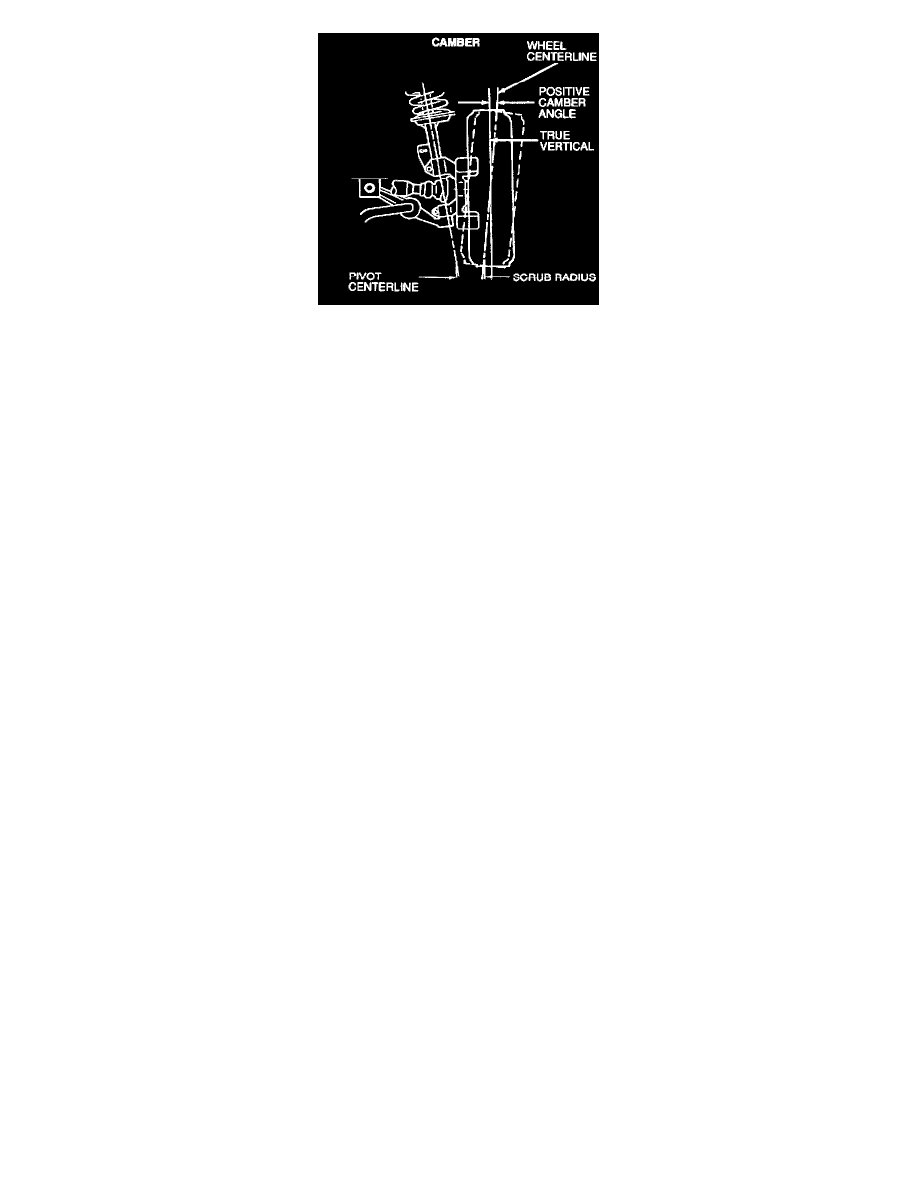Sable V6-3.0L VIN U (1999)

Ride Height Correction
Examine the vehicle for indications of abnormal attitude, such as the front or rear end being higher or lower than normal. Any heavy items in luggage
or passenger compartments such as tool boxes, sample cases or other items should tie removed before checking wheel alignment.
If vehicle attitude is not normal and no unusual load is present, check for signs of drainage or nonstandard replacement suspension parts.
Steering Angle
NOTE: Perform the steering angle check before toe-in measurement (if any steering angle corrections have been made).
Check the wheel steering angles at full right and left positions. If the angles are not within specification, the front wheel spindle tie rod must be
adjusted to the right or left until the steering angles are equal.
If the steering wheel cannot be centered with the steering angles within specification, check for improper assembly or installation of the following
steering components:
-
power rack and pinion steering gear
-
steering column assembly
-
intermediate shaft universal joints
-
steering wheel
Adjust the steering angles as follows:
1. With paint or marking pen, mark both tie rod ends and jam nuts in their original positions. These reference marks will help in equalizing right and
left adjustments.
2. Remove the bellows and free the bellows to prevent them from being twisted when the front wheel spindle tie rods are turned.
3. Loosen and back off the front wheel spindle connecting rod or end jam nuts.
4. To avoid toe-in change, turn one front wheel spindle tie rod into, and the other out of, the front wheel spindle tie rods by equal amounts. This
shortens one front wheel spindle tie rod and lengthens the other, shifting the steering gear rack right or left until the rack teeth are centered on the
pinion and rack travel from the centered position is equal in both directions. This equalizes the wheel steering angles but also rotates the pinion
and steering wheel.
5. Position the wheels straight ahead and check the steering wheel centering. If close to correct, shift the rack and front wheel spindle tie rods left or
right without turning the wheels to center the steering wheel. A shift to the left will turn the steering wheel clockwise, and a shift to the right will
turn it counterclockwise, as seen from the driver seat.
6. Verify that the wheel steering angles are still within specification. If not within specification, the steering wheel can be removed and shifted on the
steering gear input worm gear and rack to center it.
7. Reinstall bellows and bellows clamp.
Steering Pull/Drift
NOTE: When trying to correct for pull/drift, refer to the following conditions:
Vehicle will pull/drift:
a. Toward the side with the most positive camber.
b. Toward the side with the least positive caster.
Tire Lead
Lead is the movement or wander of the vehicle from a straight path on a level road with no pressure on the steering wheel. Lead is usually caused by:
-
incorrect wheel alignment.
-
brake drag.
-
uneven or incorrect tire inflation pressures.
